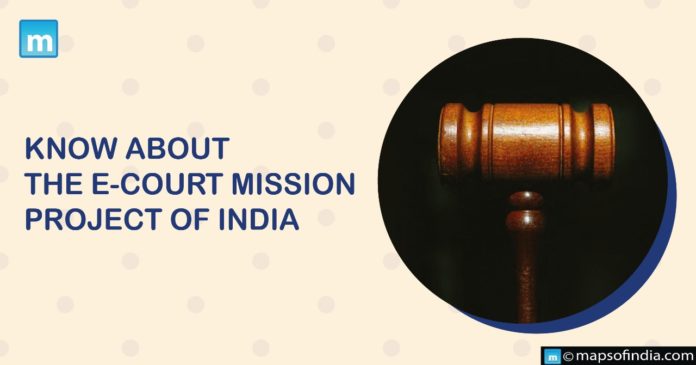The Judiciary of India launched the e-Courts project, which was part of the national e-governance plan. The idea was based on the “National Policy and Action Plan for Implementation”. According to this new idea, 14,249 district and subordinate courts were digitalized.
Through this scheme of the Indian judiciary, computers were introduced instead of papers. The National Informatics Centre (NIC) became the implementing agency. To move forward and to ensure the successful implementation of the e-court mission mode project phase 1. The process of digitalization of the Indian judiciary is divided into 3 phases.
Recommendations from phase 1
1. Provision of digital applications
Members of the judiciary were given laptops and computers. These provisions were for the participation of people through digital applications.
Under the same scheme, 14,249 district and subordinate courts were digitalized.
2. Launching of the e-Courts portal
Under the recommendations of phase 1, national e-courts, as well as the National Judiciary data grid (NJDG), became operational and open for all public access. Along with this, this website also provides online services to litigants.
Those services are case registration details, the case status, cause list, daily orders and judgements.
3. Window for information
A judicial service centre (JSC) is a single window where people can file their petitions easily. Not only this, but people can also gather the latest information on current cases.
4. Video Conferencing
A petitioner, as well as other officials, will have the facility of video conferencing with the courts and jails. This process will take less time as compared to going to court. During COVID and lockdowns, this facility was in use.
5. Case Information System (CIS)
The case information system consists of all the past and historical data regarding the cases. This software stores the data. Saved data can be accessed at the required time.
After the successful implementation of phase 1, the National Informatics Centre (NIC) rolled out phase 2. In phase 2 of digitalization, the curtain was raised on the enhancement of applications and loopholes were covered.
Recommendations from Phase 2
1. Enhancement of computer applications
In phase 2, where computers were not reached, adequate supply was held. It got fulfilled in districts with a high demand for computers.
2. Data-based service delivery
Not only the use of computers but also mobile apps and SMS were introduced. All the services that deliver on time were included in phase 2.
3. Digitalization of committees and court libraries
All the hardware related to authorities and district legal service committees was computerized. As well as libraries of the court were also changed under the digitalization programme.
4. Discontinuation of manual registers
After the implementation of the rules, no manual registers will be in use. Instead of offline documents, computers, software, portals, websites, SMS, and video conferencing will be used.
Apart from both phases, some other minor rules and creative ideas were introduced, which are as follows :
1. Tele-law mobile app
This app ensures timely listening to the issues and provides legal aid to the people. The charges are affordable for most people.
2. Nyay Bandhu scheme
The scheme launched states that practising advocates should help needy people.
3. Supreme court’s Vidhik Anuvaad Software
This software will translate orders and judgements into English from other regional languages.




